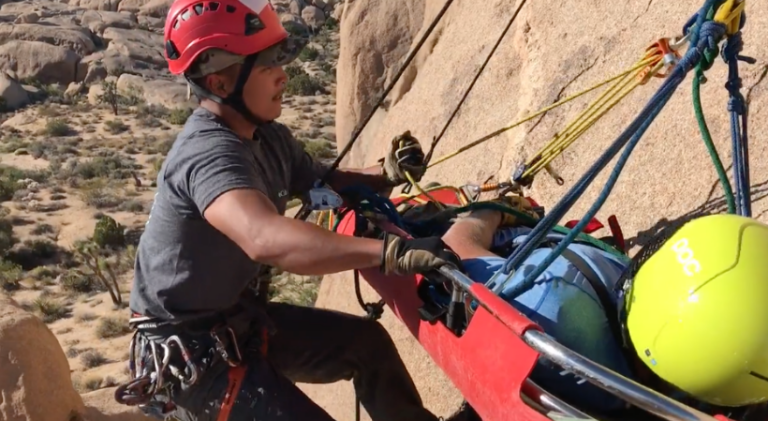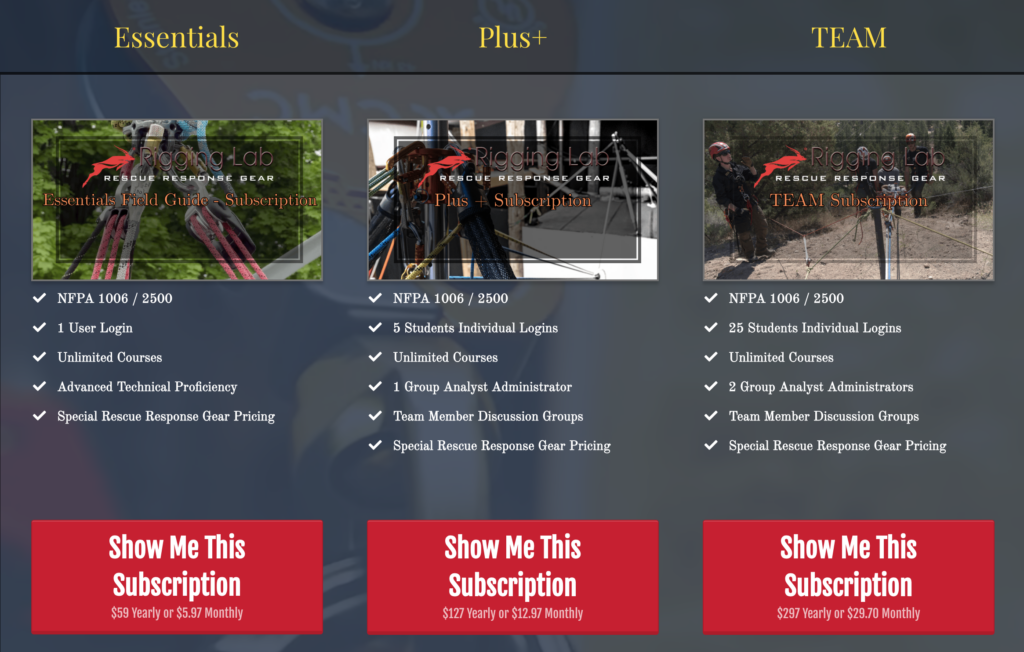The Hierarchy of Rope Rescue Learning Pathway
Rope rescue is not just about strength and bravery—it’s a meticulous process grounded in science and methodical learning. By understanding the physics and technical demands behind each aspect of rescue, teams can work more efficiently and safely. This blog delves into the key components of rope rescue training, breaking them down step by step to create a learning pathway designed for long-term success.
1. Knots & Force Multipliers (Foundation)
Why: Knots are the backbone of every rope rescue system. Without proficiency in this area, you risk instability in the entire system. Mastering knots like the figure-eight, clove hitch, and bowline ensures you can connect, secure, and build systems efficiently. Force multipliers, such as mechanical pulleys, reduce the physical strain by amplifying the force exerted, allowing you to lift heavy loads with minimal effort.
What: This foundational stage covers essential knots and the concept of mechanical advantage. The right knots and force multipliers make your system reliable and minimize physical exertion.
How: Learners practice repeatedly, focusing on speed and precision with knot-tying. Understanding the science behind force multipliers allows you to optimize effort. As the foundational skill, this becomes the anchor for all future learning. Master this, and you’ll have a reliable toolset for any rigging system.
2. Anchors & Anchor Systems
Why: Anchors are the most critical point in any rope system. A poorly constructed anchor can result in catastrophic failure. You must ensure that all forces applied to the anchor are properly managed and the anchor itself is stable. Anchors distribute forces, ensuring the entire system remains secure under load.
What: Anchors can be natural (trees, boulders) or artificial (bolts, anchor plates). The key to a successful anchor is not just strength but how well the load forces are managed.
How: By applying physics—understanding load distribution, angles, and force—you ensure the system remains stable. Rigorous testing and analysis of each anchor system solidifies your understanding. This skill ensures every load or person connected to your system remains safe.
3. Mechanical Advantage Systems
Why: Rescue scenarios often involve heavy loads, whether it’s lifting an injured person or moving equipment. Mechanical advantage systems use pulleys to reduce the physical effort required, making it easier for teams to perform lifts and hauls in challenging environments.
What: These systems, often described as 3:1, 4:1, or greater, allow rescuers to exert minimal force to achieve maximum effect.
How: Technicians learn to calculate force ratios, which help them choose the correct mechanical advantage system for each scenario. Knowing how to set up a simple haul system ensures efficiency. As systems become more complex, you gain a deeper understanding of how to balance the mechanical advantage with the environment.
4. Edge Safety & Belay Systems
Why: Working near edges presents a major risk of falls. Having effective belay systems not only provides protection for rescuers but also for the load or patient being transported. Belay systems are safety nets, ensuring that a mainline failure doesn’t lead to catastrophic consequences.
What: A belay system uses friction devices and backup ropes to arrest falls. Edge protection systems prevent ropes from being damaged by sharp edges.
How: By applying redundancy through belay systems and understanding the dynamics of a fall, rescuers learn how to mitigate risks. Edge safety involves careful planning, padding sharp edges, and ensuring systems are properly tensioned. Proper training ensures that every edge is navigated safely and that belay systems are always ready to activate.
5. Litter Operations & Patient Transport
Why: The core objective of any rescue is safely transporting a patient. Litter operations focus on securely moving an injured individual across difficult terrain, whether lowering them down a cliff face or hauling them across a ravine.
What: A litter system consists of a stretcher or Sked with rigging to secure the patient. It must be stable and prevent any further injury during transport.
How: This phase teaches rescuers to manage patient care while ensuring stability during transportation. Combining mechanical advantage with proper litter rigging ensures smooth operations. As a high-risk stage, litter operations require deep knowledge of rigging and system management to guarantee both the patient’s and rescuers’ safety.
6. High Directional & Tensioned Track Systems (Advanced)
Why: In the most complex rescue scenarios, such as moving a victim across a river or canyon, high directional and tensioned track systems become essential. These systems span gaps, allowing for controlled movement across treacherous terrain.
What: High directional systems use artificial supports like tripods or gin poles to lift the rope high off the ground, while tensioned track systems create a horizontal transport system across a gap.
How: Advanced teams learn to manage vector forces, tensioning systems, and balance to create smooth, controlled movement. It’s not just about setting up a system, but ensuring that it works perfectly under load and stress, often in the most unforgiving environments. This advanced knowledge allows teams to perform rescues in situations previously considered inaccessible.
Why This Pathway Exists
This pathway is designed to follow a logical progression from fundamental to advanced skills, with each step building on the last. It’s a structured, scientific approach that ensures every rescuer gains confidence and competence before advancing to more complex scenarios. By mastering one area, you create the foundation for the next. The learning process ensures that, by the time rescuers are dealing with high directional systems, they have a deep understanding of the mechanics and physics at play.
Who Benefits
This pathway benefits both beginners and seasoned professionals. For beginners, it provides the essential skills needed to build strong, reliable systems. For experienced professionals, it offers a chance to refine more advanced techniques, ensuring they remain proficient in complex rescue scenarios. Teams benefit as well, with a consistent training approach that ensures everyone operates at the same level of knowledge and efficiency.
Future Success
Following this pathway leads to well-rounded rescue technicians who are not only proficient in rope rigging but also able to lead and teach others in high-stakes operations. Those who “stay the course” develop the critical thinking and decision-making skills necessary to navigate the challenges of any rescue scenario. Mastery of these systems ensures not just individual success, but also enhances team performance, safety, and leadership potential.
This scientific, step-by-step approach to learning rope rescue ensures that each skill is deeply understood, applied effectively, and executed safely.
For more training and resources, visit Rigging Lab Academy or explore high-quality gear at Rescue Response Gear.
Peace on your Days
Lance










